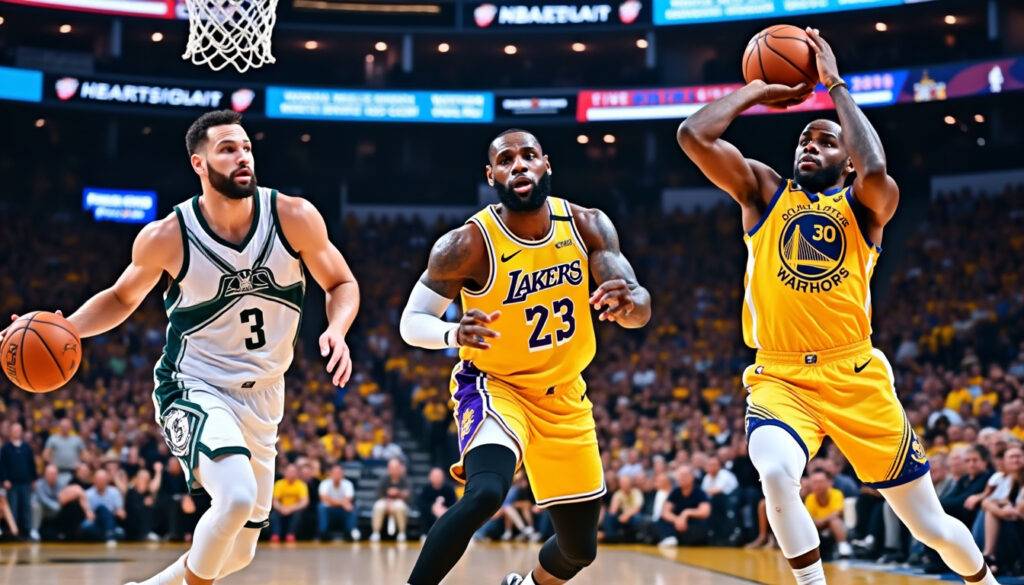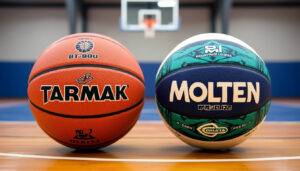Final Rankings of the 2025 NBA Season: The Top 10 Superstars including Jokic, LeBron, and Durant Revealed!

The 2025 NBA Rank drops the final top 10 players heading into the 2025-26 season — and yes, it reads like a who's who: Nikola Jokic still on top, Shai Gilgeous-Alexander riding an MVP/Finals run, and veterans like LeBron James and Kevin Durant holding down prime spots. We asked a panel of more than 150 insiders to predict who will be better next season, running more than 20,000 player-vs-player matchups. I’ll walk you through the list, the storylines that matter, and what this means for teams, shoes, and the league’s business side — all with a coach’s-eye view I picked up back in the league. Meet Marcus, my old AAU kid, who uses these ranks to set offseason goals for his squad; he’s the thread I’ll check back with as we break things down.
NBA Rank 2025: How The Final Top 10 Was Built And What It Means
The panel weighed predicted contributions for the 2025-26 season only, factoring in health, role changes, and team context. Voters ignored long-term injuries for this year’s list: names like Jayson Tatum and Tyrese Haliburton were left out of the ballot because of recovery timelines.
- Method: Expert votes on matchups to forecast next-season impact.
- Sample size: Over 20,000 pairings evaluated by more than 150 staffers.
- Focus: Quantity + quality of expected contributions (not career résumé).
Marcus loved the transparency: he told me he uses the list to set measurable training targets for players who dream of cracking a future top 100. That practical angle matters — rankings aren’t just hype, they’re a blueprint.
Ranking Methodology And Key Caveats For NBA Fans
Voters were asked, “Which player will be better in 2025-26?” — not who’s most decorated historically. That nuance explains why some stars shift up or down despite big past seasons.
- Short-term lens: Year-to-year projection, not career legacy.
- Injuries excluded: Long-term absences removed from consideration.
- Role changes matter: Coaching switches and roster moves heavily influence spots.
Quick takeaway: treat the list as a forecast, not a final grade. Marcus plans his training camp drills around the role changes called out by the panel — smart move if you coach young pros.
Top 10 Breakdown: Nos. 10–6 — Guards And Young Wings On The Rise
The 10-to-6 stretch mixes ascending stars and battle-tested vets who still control offenses. Each player's slot says as much about their team situation as it does about individual skill.
- No. 10 Jalen Brunson (Knicks): A higher-usage guard who must adapt to Mike Brown's faster, more ball-movement offense. Signature stat: career-high 7.3 assists.
- No. 9 Kevin Durant (Rockets): Age is a number but efficiency still rules — Durant remains one of the purest scorers in history.
- No. 8 LeBron James (Lakers): Heading into his 23rd season, the questions are about fit and longevity rather than ability.
- No. 7 Stephen Curry (Warriors): Even with a hamstring scare, Curry’s perimeter gravity is unmatched; his 300+ 3-point seasons are historic.
- No. 6 Anthony Edwards (Timberwolves): Took a leap as a shooter and scorer; must curb techs and grow as a leader.
From a coaching POV, Marcus liked Brunson’s adaptability note — changing pace and sharing the ball are things he drills over the summer, especially when teaching pick-and-roll reads.
Want full context on team readiness and training-camp buzz? Check the team training camp breakdowns and power-rankings that sketch how surrounding casts could swing these players’ fortunes.
Top 5 Deep Dive: Why Jokic, Shai And The Rest Hold The Summit
The podium group represents players whose individual impact reshapes opponent game plans and playoff expectations. I’ll break each down with the same coach’s checklist Marcus and I use: scoring, playmaking, durability, and team context.
- No. 5 Victor Wembanyama (Spurs): Health-checked after DVT, youth + unique skill set = sky-high ceiling. Signature stat: became one of the few to record a 5x5 season with blocks and a 50-point game.
- No. 4 Giannis Antetokounmpo (Bucks): Still the league’s two-way anchor, trading threes for midrange dominance and elite efficiency.
- No. 3 Luka Doncic (Lakers): New home, renewed focus — he led his national team in scoring and reshaped his body in the offseason.
- No. 2 Shai Gilgeous-Alexander (Thunder): The reigning MVP/Finals MVP and champion; his true-shooting spike and playmaking make him the prototype of an elite modern star.
- No. 1 Nikola Jokic (Nuggets): Back-to-back No. 1 in this rank — his season with a triple-double average was one of the most dominant statistical campaigns ever.
Marcus’s take: guys like Jokic and Shai change practice plans — you simulate their decision-making in every scrimmage to teach young players how to react under pressure. That’s how talent filters down the system.
For a broader look at where teams stack up around these stars and how front offices are building, the front-office and team power rankings add important context to player placement.
How These Top 5 Shift Playoff Odds And Market Value
Top players drive ticket demand, sponsorships, and merchandise sales — the ripple goes from the court to retail shelves. Brands track these ranks closely because a top spot boosts jersey moves and shoe collaborations.
- Shoes & apparel impact: Nike, Adidas, Under Armour, and Jordan Brand profile rises and fall with player visibility.
- Endorsements: Gatorade, Tissot, and Fanatics capitalize on star narratives for campaigns.
- Retail flow: Foot Locker and the NBA Store see spikes tied to playoff runs and finals MVP moments.
Practical insight: if you’re a young player or a coach like Marcus, pay attention to how a player’s rank affects not just on-court matchups but also the off-court business that funds development programs.
Broader Implications: Team Building, Salaries And The Next Wave
Rankings predict on-court value, but they also inform roster decisions, salary negotiations, and scouting priorities. Teams use lists like this when balancing short-term push versus long-term sustainment.
- Contract leverage: High-ranked seasons translate to maximum-bird or supermax interest for players approaching extensions.
- Youth pipeline: Players ranked outside the top 10 but rising are targets for development and trade packages.
- Market strategy: Teams and brands (Spalding, Fanatics, Tissot) sync promotional calendars to these player narratives.
If you want deep dives on salaries and long-term payroll implications, there are archived pieces that map past pay scales to performance — a useful reference for predicting how clubs might pivot.
- Historical Highest Paid Player Context
- NBA Team Rankings 2023 (for historical comparison)
- How Playoffs Tournament Impact Team Rankings
Practical Checklist For Coaches And Players Using These Ranks
Marcus uses a three-point checklist when translating rankings into training: skill targets, conditioning benchmarks, and role-specific reps. Here’s a stripped-down version you can use.
- Skill targets: Increase shot-volume from your projected role (catch-and-shoot, pull-up, etc.).
- Conditioning: Build the minutes durability to match projected workloads.
- Basketball IQ: Study tendencies of top-ranked opponents to simulate pressure scenarios.
That final point matters: learning how Jokic sees the floor or how Shai finishes through contact is replicable work in practice, and it’s exactly what separates prospects that hit the top 100 from those that don’t.
Questions Fans Ask Most About The 2025 Rankings
Who was left off and why?
Several stars recovering from long-term injuries — including Jayson Tatum, Tyrese Haliburton, Damian Lillard, Kyrie Irving, Dejounte Murray, and Fred VanVleet — were excluded because the panel focused on players expected to contribute this coming season.
- Reason: Year-specific projection excludes players unlikely to log regular-season minutes.
- Effect: Creates short-term clarity, but some comebacks could shake next year’s list.
Does the rank predict championships?
No single player rank guarantees a title. Team construction, depth, injuries, and matchup luck matter just as much. The list highlights who should be most impactful, not who will win it all.
- Championship drivers: Depth, coaching, and health.
- Player influence: Stars tilt odds but don’t carry the entire load alone.
How should fans use this list?
Use it for conversation, fantasy prep, and to set expectations going into training camp and the season. If you’re a coach or player, use it as a benchmark for growth.
- Fantasy tip: Target players on ascending teams with increased roles.
- Coaching tip: Train to counter the tendencies of higher-ranked players you’ll face.
Final Notes From A Former Player’s Lens
These rankings matter, but context matters more. Marcus and I break player narratives into three buckets — health, role, and surrounding talent — because that’s how seasons get won or lost. Pick one takeaway and build around it: if your league is chasing Jokic-level play, you better be planning depth and matchup chess.
- Insight: Rankings are a tool, not an oracle.
- Action: Focus your offseason on the weaknesses the ranks expose.
One last thought: keep an eye on how endorsements and gear cycles react — brands like Nike, Adidas, Under Armour, and Jordan Brand will double down around top names, while partners like Gatorade, Spalding, Foot Locker, Fanatics, and Tissot push content aligned with those stars. Fans should watch the NBA Store drops after key moments — that’s where rankings meet retail.
Legacy And Looking Ahead: What To Watch For Next Season
Expect upward movement from younger players with clearer roles, and watch veterans who maintain efficiency despite age. Jokic, Shai, and Luka set the bar, but the chase group — Wembanyama, Giannis, and the dynamic wings — will define the narrative.
- Watchlist: Role clarity in training camp, key roster additions, and early-season injuries.
- Metrics: True shooting, usage-adjusted assists, and lineup net ratings.
- Signals: Early-season chemistry and coaching stability.
Marcus will update his squad’s goals after the first five regular-season games — that’s where theory becomes reality, and the rankings start to mean even more.
How To Read More And Stay Updated
- Offseason power context and signings
- League culture and tour crossovers
- Playoff format impacts on team ranking
- Team power rankings for lineup context
- Full 100-to-51 list
Common Questions From Fans And Coaches
Will Jokic keep the No. 1 spot?
Short answer: yes, as long as he maintains his current level and Denver’s roster supports him. Jokic’s combination of scoring, rebounding, and passing is rare and hard to replace.
- Key metric: assist and touch volume from the high post.
- Team fix: Denver’s bench and role-player upgrades will be decisive.
Is LeBron still a top-10 player?
LeBron remains elite in production and impact; the rank reflects both his on-court numbers and unique mentorship value. A move from the Lakers or a role tweak could bump him further depending on minutes and usage.
- Durability: Can he stay healthy across 70+ games?
- Fit: How the roster complements his playmaking will decide postseason outcome.
How do young players use this list to improve?
Use it as a practical checklist: identify the most common skills the top players excel at and practice those under pressure. Marcus drills finishing through contact and decision-making vs. veteran defenders because those habits translate to the next level.
- Practice focus: shot selection, pace control, defensive fundamentals.
- Mindset: consistency and film study are non-negotiable.

